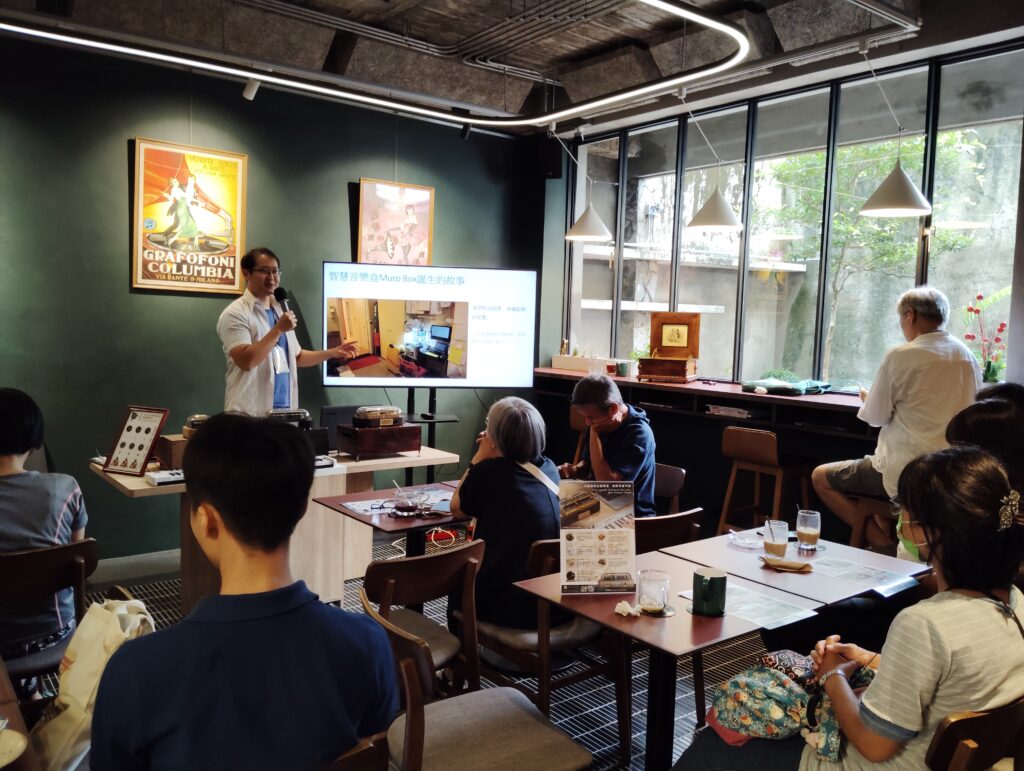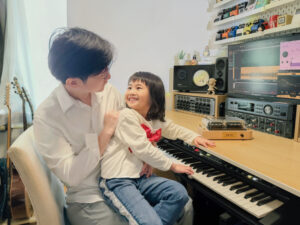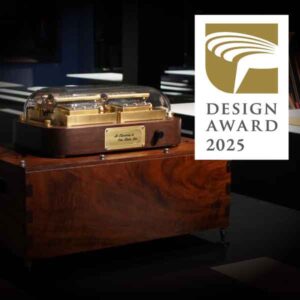We hosted our very first lecture at the Wending Phonograph Museum in Tainan, bringing along the Muro Box to meet friends who share our passion for music and mechanics. During the event, we shared our nine-year startup journey, the technical challenges we’ve faced, and the core beliefs that have kept us going to this day.
In this event recap, we’ve also documented some of the guests who left a lasting impression on us, as well as the knowledge we gained from exploring the museum’s remarkable collection.
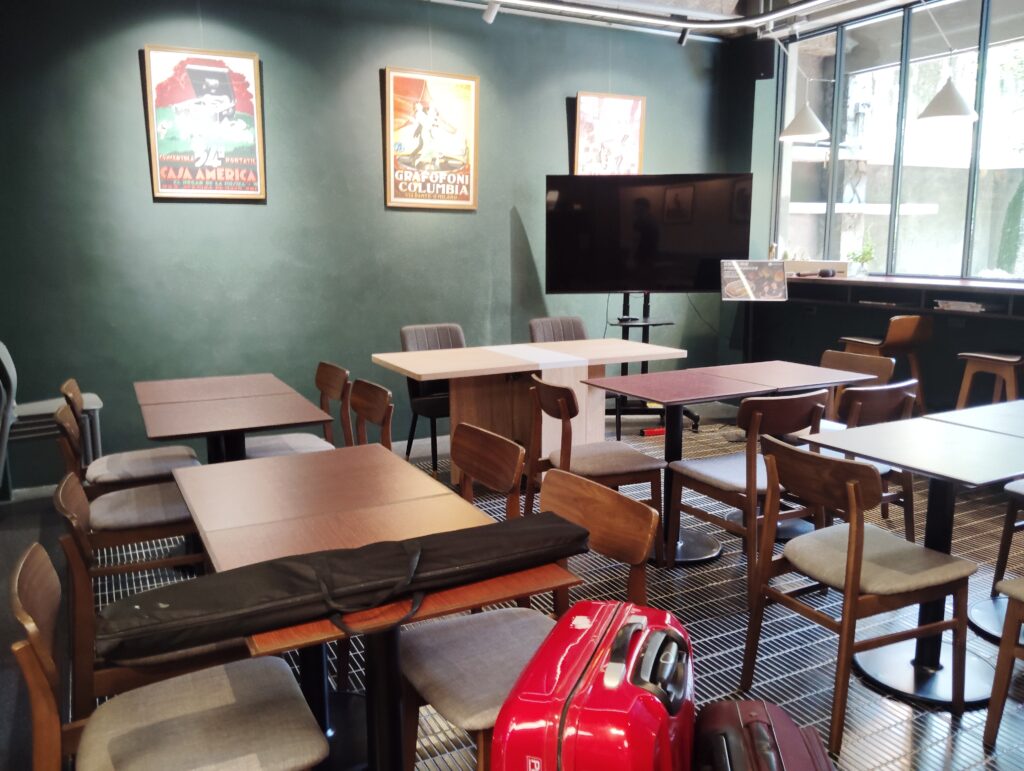
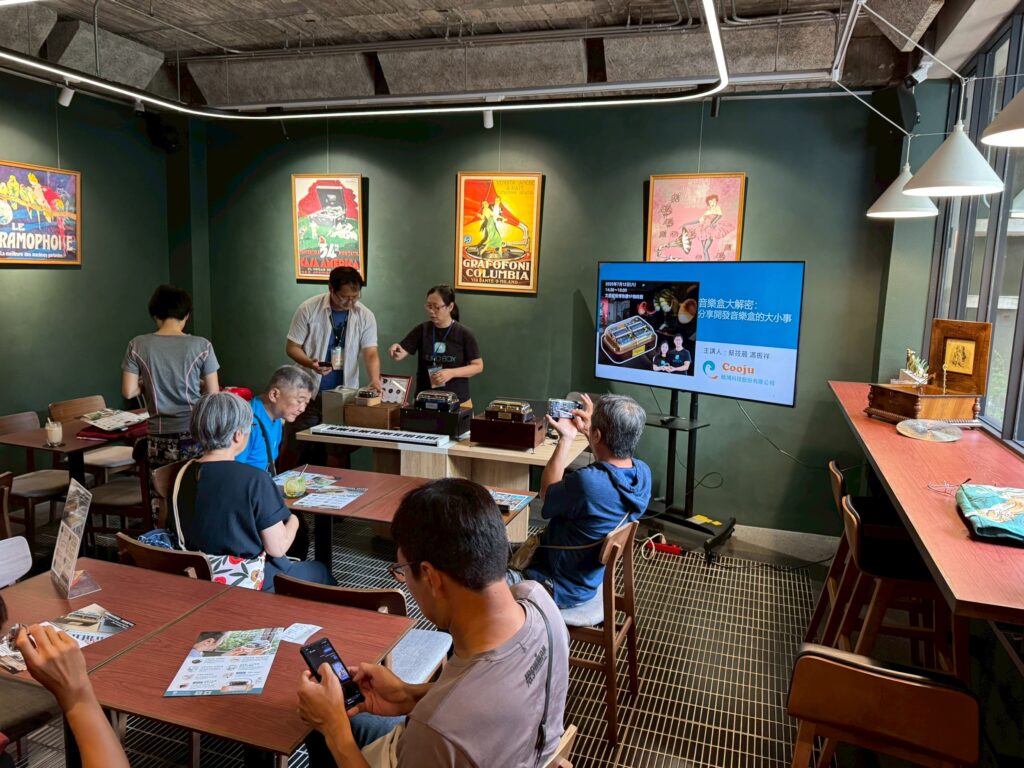
Thanks to the professional guidance of museum staff member Liling, we were able to quickly browse the large mechanical music boxes from 200 years ago—even within just a 30-minute break.
While setting up the three demo units of the N20 Standard, N40Standard and N40 Sublime, the staff at the Wending Phonograph Museum were incredibly attentive. They proactively asked about our needs, helped arrange the space, and even offered to take photos and document the event for us. Their support truly contributed to the smooth running of the event.
We would also like to thank the museum’s former director, Jerry. Humble and approachable, he noticed that our presentation mentioned the evolution of early self-playing instruments like disc music boxes and phonographs. He kindly brought out a disc-style music box from the museum collection and played it for the audience. (Unfortunately, everyone was so captivated by the sound that we forgot to take photos or videos.)
This was also our first opportunity to directly compare Muro Box with antique, collectible-grade classical music boxes. What left the strongest impression was the sheer volume of the classical music box—it was loud enough to overpower conversations nearby. In contrast, we recalled seeing a Japanese music box from the brand Nidec at the Taichung Modern Music Box Museum, and it didn’t produce nearly as much volume.
This comparison got us thinking: Is the difference in volume mainly due to the sound box or the comb? Could it be that Japanese brands deliberately toned down the volume? What logic or customer needs are behind these choices? This experience has inspired us to rethink the volume design of future Muro Box models.
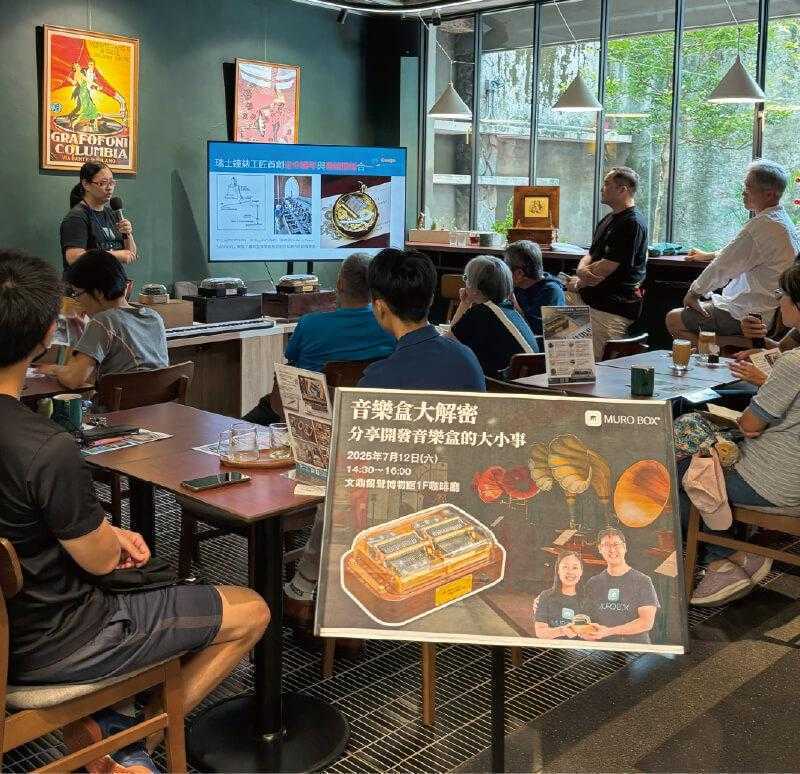
First Half Presented by Co-Founder Shiao-Chen Tsai: The Secrets of Music Boxes
I began by discussing the historical evolution of music boxes, guiding everyone to understand how traditional mechanical music boxes traveled from the West to the East and eventually developed into an industry in Taiwan. I also took apart the music box movement, explaining in an easy-to-understand way the design ingenuity of each component, as well as the core principles behind how the music comb determines the melody and speed.
Second Half Presented by Muro Box Inventor, Dr. Feng: The Entrepreneurial Journey of the Muro Box
Many people have asked us, “Why make music boxes?” and “Why not just have a factory produce them?” In this lecture, we shared stories never before revealed — including engineers going temporarily off the grid, design firms presenting discouraging budgets, and even the heartbreak of being cold-shouldered when visiting woodworking shops in person. Every challenge and every mistake was met with grit and perseverance.
Thank You to Everyone Who Traveled a Long Way to Join the Event
One memorable story was a grandmother and her grandson who took the train all the way from Taichung to attend the Muro Box live listening event. Before registering online, Mr. Chang told us he would bring along a visually impaired elder. We were curious how they found us, and it turned out they were looking for a vintage-style instrument to play a special song for the grandmother’s 80th birthday. Mr. Chang also shared their need for a music box with simple operation features so that an elderly person experiencing mild memory loss or reduced ability could use it independently. They also hoped the volume could be adjusted to accommodate hearing difficulties.
Another dedicated participant was Mr. Huang from Zuoying, Kaohsiung. Despite the scorching heat, he rode his motorcycle all the way to Tainan to attend the lecture. He said he had been curious about our product for years after seeing it online, and finally had the chance to experience the smart music box performance in person. He arrived early and asked us many detailed questions about operating the product.
We also had an elderly couple who arrived early, traveling all the way from Taipei by train. They wanted to use our smart music box to arrange and repeatedly listen to many guitar songs composed by the husband’s late father. Though neither of them plays instruments, they hoped to relive those warm memories. It turns out they are the son and daughter-in-law of Mr. Lu, a respected Taiwanese guitar master.
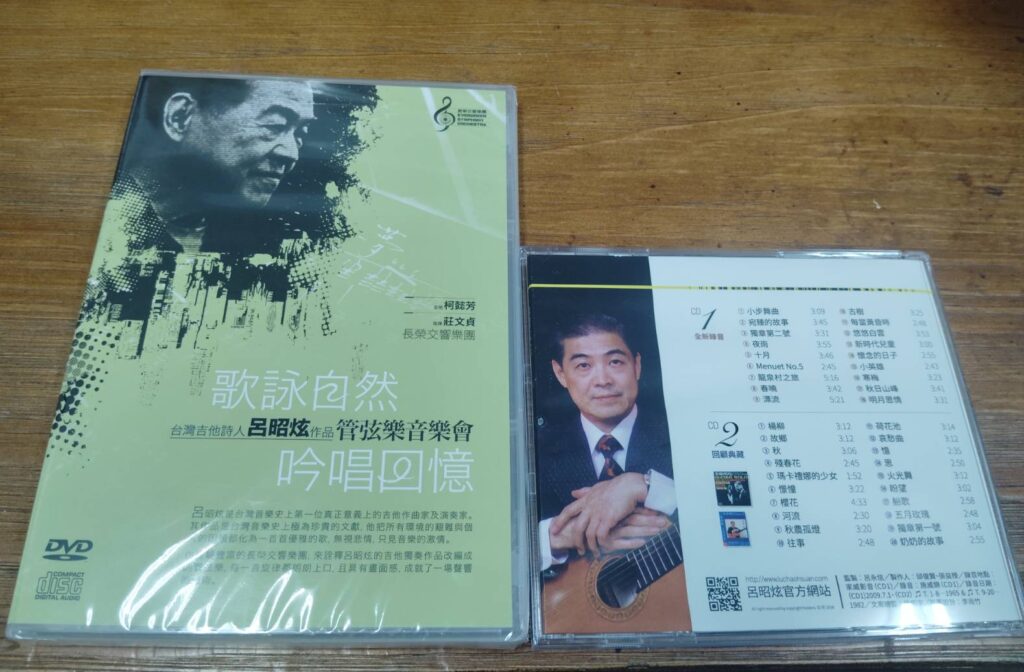
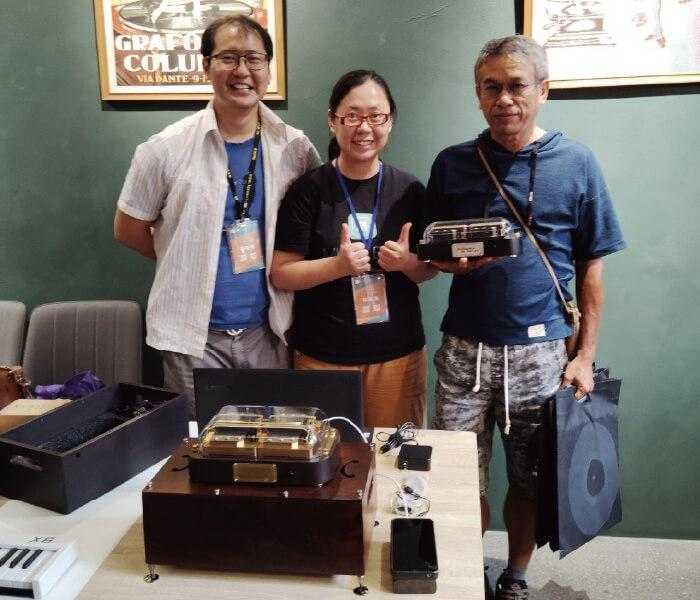
We would also like to give special thanks to the director and operations team of the Wending Phonograph Museum for providing us with a valuable guided tour during the breaks in our talk, allowing us to gain in-depth insights into the structure and resonance design of various phonographs. These observations will serve as important inspiration for developing future music box products with richer tonal expression.
If you missed this event, no worries! We sincerely invite you to visit our office in Sanchong, New Taipei City, whenever you have time. Come have a cup of tea, see our product prototypes, and chat about many untold stories of music boxes and this entrepreneurial journey—from “fulfilling our own dreams” to “helping others fulfill theirs.”
